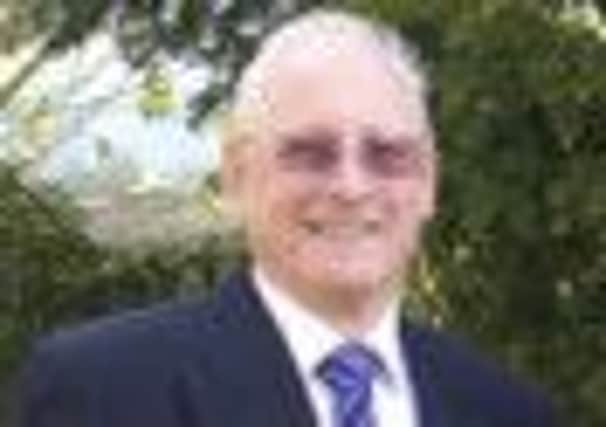Obituary: William Paterson, engineer


William Paterson was a teenage sailor whose passion for communications led to a fascinating career that began in the unlikely surroundings of a sanitary ware showroom and culminated in his role as director of engineering for the Northern Lighthouse Board.
En route he saw the world, joined the Civil Aviation Authority, trained at Bletchley Park, escorted the Princess Royal on lighthouse inspections and was privileged to be a guest at Windsor Castle for her 50th birthday – an impressive string of achievements for a boy who was orphaned at 12.
Advertisement
Hide AdAdvertisement
Hide AdBorn during the Second World War to coal merchant William Paterson and his wife Betty, his mother died shortly after the birth of his little sister and he lost his father just five years later.
The youngsters were raised by a widowed aunt with the help of her daughter and son-in-law who was a strong influence in young William’s life, giving him a thirst for knowledge and the encouragement to study.
Educated at Neilston Public School and Paisley Grammar, he left school at 15 to train at Glasgow Wireless College, preparing for a life at sea as a radio officer.
However, his first job was with Shanks of Barrhead, world-renowned for its bathroom ware, where he spent a brief spell in their Glasgow showroom until his first voyage, aboard the Norwegian vessel Edward Jansen, in 1957.
He was later badly injured and had to be hospitalised in Calcutta when a carboy of water smashed on the deck during loading, slashing his left arm and leaving him with large scar which he delighted in displaying to the unwary.
After returning to the UK, he spent four more years in the Merchant Navy, following by two as a lecturer at the Wireless College where he had been a student several years earlier.
From there he joined the Civil Aviation Authority as a radio technician, working on air traffic control equipment around Scotland, before transferring to Glasgow Airport in 1966, where he specialised on instrument landing technology.
He also furthered his knowledge at various training centres, including Bletchley Park, home of the wartime code-breakers who cracked the German Enigma machine and hastened the end of the Second World War.
Advertisement
Hide AdAdvertisement
Hide AdBacked by his employers who funded his studies, he attended Strathclyde University between 1969 and 1973, and on graduating BSc Eng he was sent to the Scottish HQ in Edinburgh. During summer holidays there he spent time with the BBC working on outside broadcast events, including the Royal Edinburgh Military Tattoo.
He joined the North Lighthouse Board (NLB) as head of the radio department in 1978. His admiration for the Stevenson family of lighthouse engineers and designers, plus his love of engineering and being at sea, combined with the historical significance of the NLB, made it his ideal job.
Nine years later, he was promoted to engineer in chief, a post subsequently known as director of engineering, which he held until retiring in 2000.
The job also saw him travelling the world again – to international lighthouse conferences and meetings in such places as Holland, Hamburg, Hawaii, Japan and South Africa.
At home, much of his work involved implementing the automation of the lighthouses and as part of that he escorted the board’s patron, the Princess Royal, on inspections of the lights in various stages of the automation process.
Patron since 1993, the princess has made it her mission to visit all the lighthouses around Scotland and Paterson was greatly impressed by her determination not just to be a figurehead but to become actively involved in the NLB.
He was also honoured to be among the NLB members invited to a reception at Windsor Castle to celebrate her 50th birthday in 2000.
Away from work, he was a DIY enthusiast – turning his hand to anything from making a sewing cabinet to working on the engine of his car in the kitchen – and continued his love of communications, using Morse code to communicate with a friend in Denmark for many years.
Advertisement
Hide AdAdvertisement
Hide AdHe and his wife Margaret, who met at an engagement party and married in Glasgow in 1969, moved in retirement from Edinburgh to Aberdour, where he became involved in village life.
He was a member of Aberdour Golf Club and an elder and the property convenor of St Fillan’s Church. Just over a year ago the electricity cable leading to the church was hit by lightning, sparking a fire in the organ loft and covering everything in the building in a thick layer of greasy soot.
Paterson, who played the organ in his youth, spent the following seven months having the 12th-century church returned to its former glory in time for the annual flower festival which took its theme, “The Phoenix Rising from the Ashes”, from the restoration he had worked so assiduously to bring to completion.
He is survived by his wife, their children Eleanor, Hazel, David and Robert, five grandchildren and his sister Fiona.